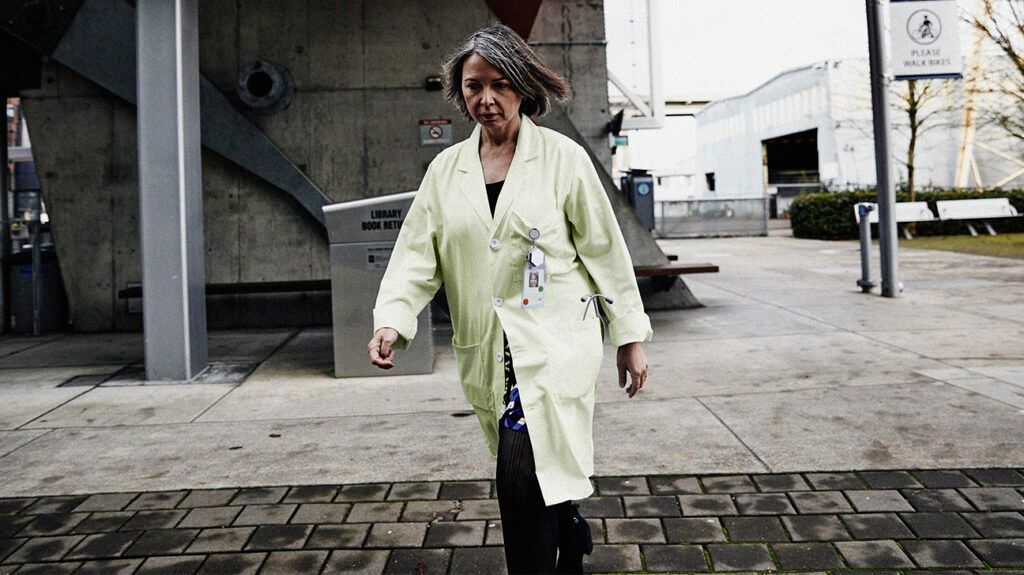Thyroid cancer staging describes whether or how a person’s cancer has spread. People with different stages of thyroid cancer may have different treatment options and a different recovery outlook.
Thyroid cancer is cancer in a person’s thyroid gland. The thyroid gland is a small, butterfly-shaped organ in the front and lower area of a person’s neck. It produces hormones that regulate a person’s heart, digestion, and muscle function. Signs of thyroid cancer may include swelling or a lump in a person’s neck.
If doctors diagnose a person with thyroid cancer, they call the process to find out whether or how far it has spread “staging.” The stage of a person’s thyroid cancer describes where, if anywhere, the cancer has spread. It helps doctors determine how serious a person’s cancer is and the best way to treat it.
A person’s risk of developing thyroid cancer changes
This article explains the stages of thyroid cancer and how they work. It also discusses thyroid cancer treatments and outlook.

The stage of a person’s thyroid cancer
- the size of the tumor
- any spread to lymph nodes nearby
- any spread to other parts of the body
Doctors use the stage of a person’s thyroid cancer to determine the best treatment plan and how the cancer may affect the person.
Learn more about thyroid cancer.
Doctors most often use the
Using the TNM system, a doctor classifies a person’s thyroid cancer stage using three pieces of information. The system describes a person’s cancer stage with numbers assigned after each letter. Each letter corresponds to an increasing spread of cancer from a person’s thyroid:
- T (tumor): The extent or size of a person’s tumor. It describes how large a person’s cancer is and whether it has grown into nearby structures.
- N (nodes): This describes whether a person’s cancer has spread from their thyroid to their lymph nodes.
- M (metastasis): This describes whether a person’s cancer has spread from the thyroid to farther sites, such as distant organs. Doctors refer to this spread as “metastasis.”
The numbers doctors assign after each letter give more information about each factor. Higher numbers mean a person’s cancer
When a doctor has determined a person’s TNM categories, they combine that information. This is called “stage grouping.” The result is a doctor assigning a person’s cancer an overall stage. For thyroid cancer, the stages range from 1–4, sometimes referred to as stages I–IV.
Doctors can often treat thyroid cancer. The spread of a person’s thyroid cancer
If a person has stage 1–3 thyroid cancer, a doctor will classify it as localized or regional. These cancers have not spread beyond a person’s thyroid or lymph nodes. Treatments for these stages may include one of the following or a combination of treatments:
- surgery to remove:
- some of a person’s thyroid gland, called a lobectomy
- all of a person’s thyroid gland, called a thyroidectomy
- all or part of certain lymph nodes
- radioactive iodine therapy, which involves using small amounts of radiation a person can drink or consume in tablet form to destroy cancer cells
- hormone tablets to help prevent the cancer from coming back
- external radiation therapy, in which doctors use high energy radiation to destroy cancer cells
If a person has stage 4 thyroid cancer, their cancer is metastatic. This means it has spread to other parts of their body beyond the thyroid and lymph nodes.
With stage 4 thyroid cancer, treatments do not typically cure the cancer. However, they can ease symptoms and improve a person’s quality of life. Treatments for stage 4 thyroid cancer include the same methods as for stages 1–3, or:
- surgery to remove cancer from areas in a person’s body it has spread to
- chemotherapy, or medicines to destroy cancer cells if a person’s cancer has spread or come back
- radiation therapy, or using radiation to destroy cancer cells if it has spread and doctors cannot remove it with surgery
Learn more about thyroid cancer treatment.
Most people with thyroid cancer
People with higher stages of thyroid cancer have a lower likelihood of a full recovery.
Lower stages of thyroid cancer mean a person’s thyroid cancer has not spread as far. This increases the chance of recovery and improves the overall outlook.
Doctors will analyze a person’s thyroid cancer to determine its stage using a classification system. This system allows them to describe a person’s thyroid cancer as higher or lower stage. The stages range from 1–4. Higher stages mean a person’s thyroid cancer has spread from their thyroid to other areas in the body.
There are several treatment options for thyroid cancer and recovery is possible in many cases. Lower stages of thyroid cancer typically indicate a better chance of a full recovery.
